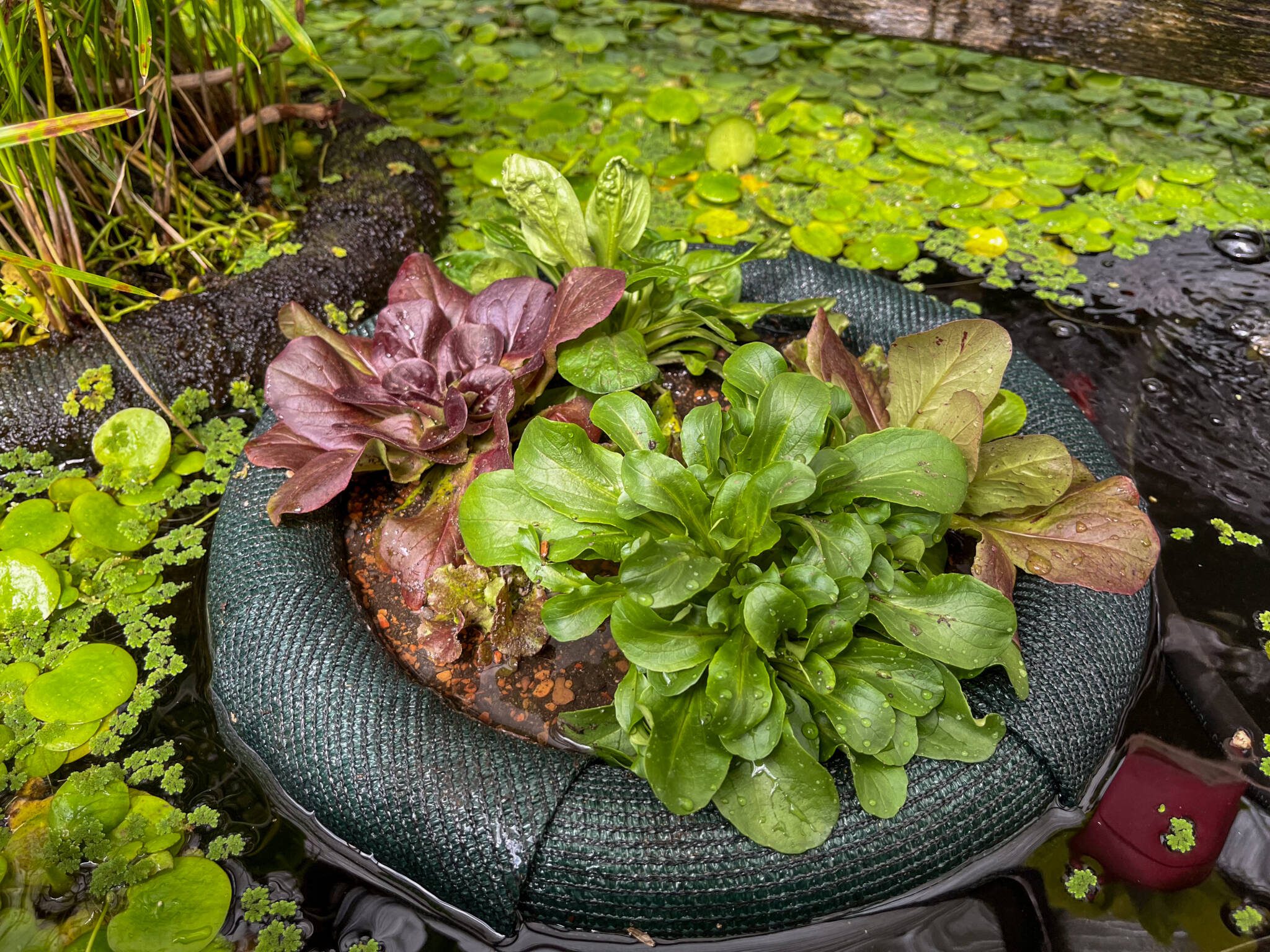
When you think of floating gardens, you likely picture the ancient Aztec city of Tenochtitlan. Rows upon rows of floating gardens also known as chinampas. People on canoes travel through the canals while they tend to their crops and animals.

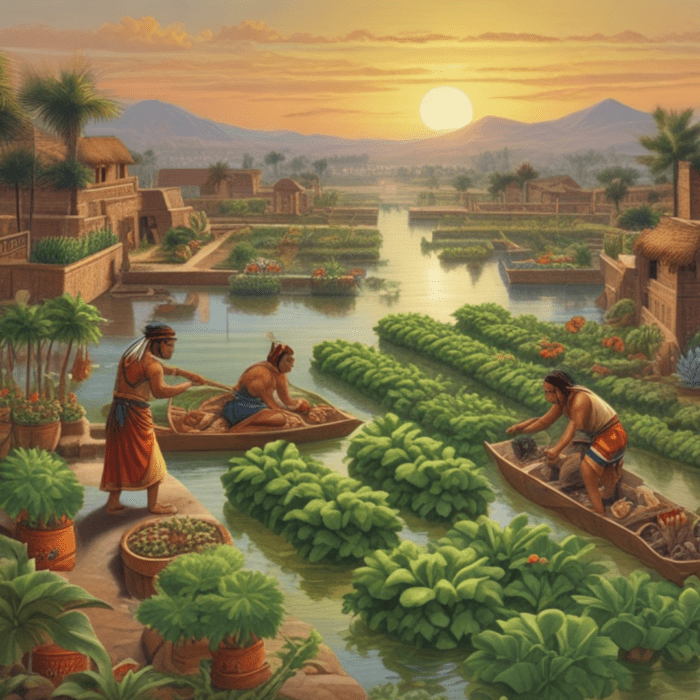

This innovative farming technique sustained a thriving civilization in an area that would have otherwise been uninhabitable. While the majority of the city of Tenochtitlan was destroyed by Spanish conquistadors, this farming practice is still being used today in Xochimilco, Mexico. The use of these floating gardens declined in modern times with the rise of industrial agriculture. However, the pandemonium of 2020 brought a resurgence of interest to this ancient food growing technique. 700 years after they were originally built, the floating gardens in Xochimilco are once again sustaining the people of Mexico City.
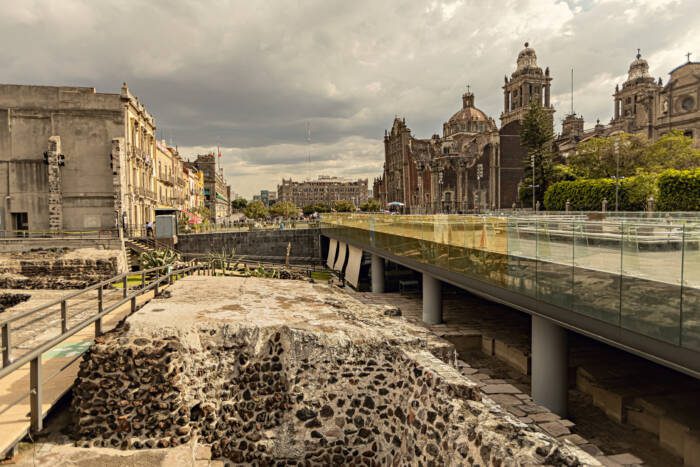
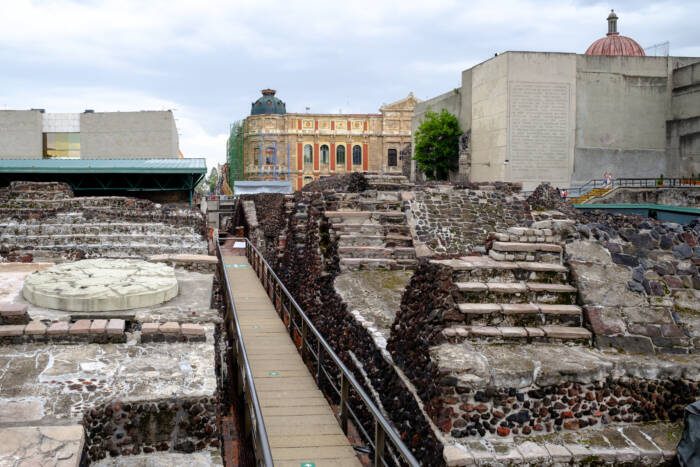
What are the Benefits of Floating Gardens?
This farming technique works so well for a few reasons.
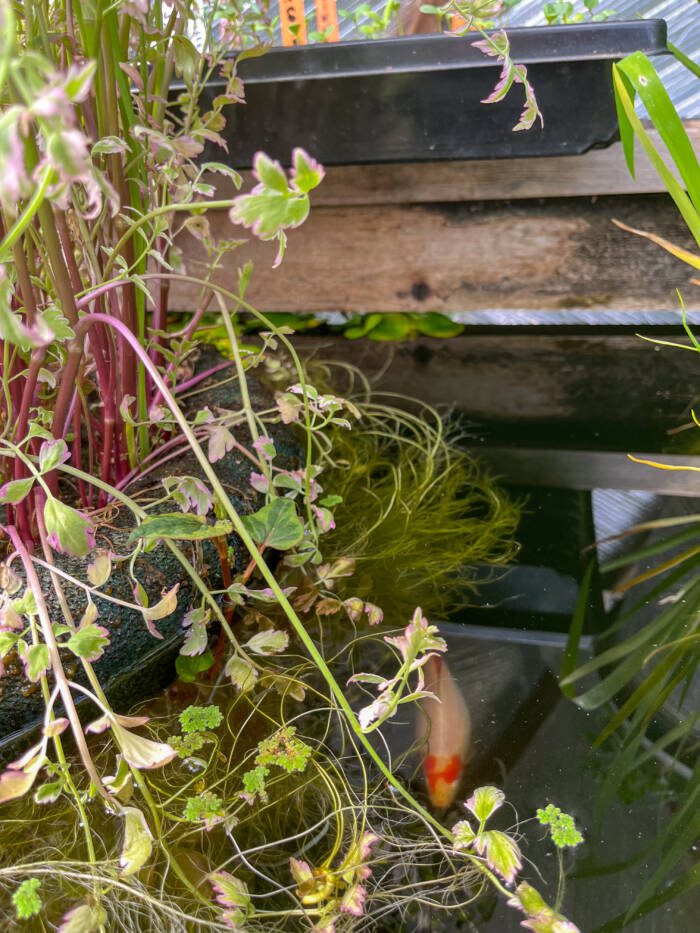
- The nutrients in the water and sediment in the lake are constantly enriching the soil.
- The planting medium acts as a sponge absorbing water for plants with smaller root structures. Plants with large roots grow through the islands and their roots can absorb water as needed directly from the lake.
- These types of gardens provide a protected environment for aquatic life.
In addition to these benefits, floating gardens also help to reduce algae growth and clean the water. Plants act as filters, absorbing excess nutrients that can lead to algae blooms. The surface coverage provided by the floating gardens helps to minimize the amount of sunlight that penetrates the surface. This coverage also leads to a reduction in algae build up.
As many of you know, our Growing Dome greenhouses come standard with an above-ground pond. This pond’s primary purpose is to store heat. However, we highly encourage customers to create a pond ecosystem to utilize the space. The ideas behind the floating gardens of Tenochtitlan can be scaled down to work within the confines of a small pond.
How do Floating Gardens Work?
The floating gardens of the Aztecs were composed of earth that was spread on top of a woven bed of reeds. They were then anchored to the bottom of the lake bed using native willow branches to prevent them from swaying in the wind. These floating gardens are essentially large scale aquaponic systems. While there is a bit of planting medium, the nutrients provided from the water below are what sustains this system in the long run.

People often ask us about how to install an aquaponic system in the Growing Dome, but the truth is it already comes with one! The fish in your pond will add nutrients into the water that will then be absorbed by your plants. That is an aquaponic system in the most basic of terms. You can get more high tech if you wish, but if this growing method has worked for over 700 years do we really need to reinvent it?
DIY Floating Gardens
Let’s start with the basic principle of the floating gardens themselves. A woven platform topped with a growing media. We took this idea and created floating pond planters of various sizes. The planters are created using woven mesh and extruded foam rings that are sewn together to make a perfect planter for any bog or marsh plants. These planters are made to last. We have some that are over 10 years old and still thriving! You can create extravagant arrangements, or simple one-plant islands to add height and variation to your pondscape.
Once you have your desired plants, you will fill the planters with an aquatic planting medium (one that is safe for fish). Because these planters float, they will uptake as much water as they need and once the plants are established the roots will grow through the mesh and into the water below. These long hanging roots create a great habitat for fish!
What Plants can I Grow in Floating Gardens?
Marginal or bog plants grow well in these types of planters. Our ponds are 4’ deep, so these types of plants would not be able to grow in this environment without the use of a floating planter. Plants in this family include marsh marigolds, iris, lemon bacopa, taro, umbrella palm, and water celery.
You can use these planters to grow otherwise terrestrial plants, but make sure that the roots are washed clean of any soil before adding them to your planters. Some of the plants that can be grown in floating gardens include watercress, lettuce, kale, spinach, sorrel, swiss chard, basil, parsley, tomatoes, and strawberries.
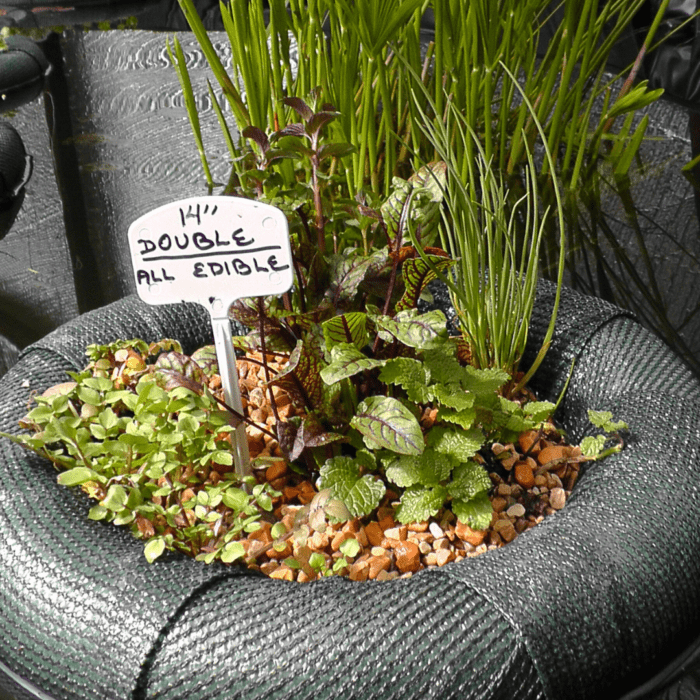

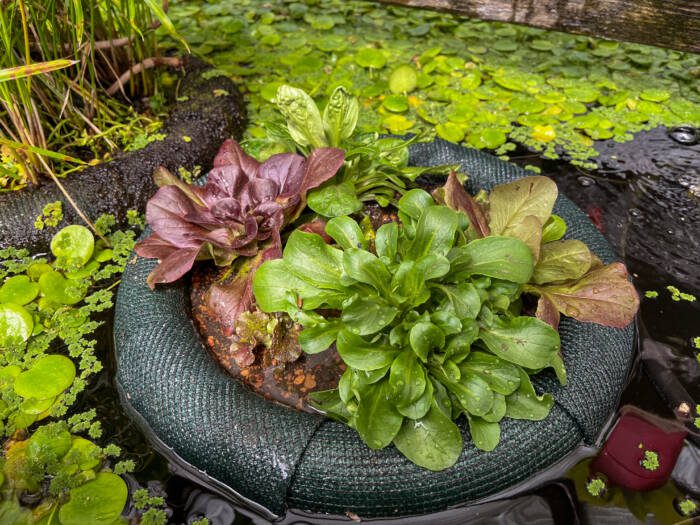
How Do I Decide What to Grow?
When deciding what plants to choose it is important to consider the size of the plant at maturity, nutrient, pH, and temperature requirements. Spinach and kale are great year-round plants for the Growing Dome pond as they can tolerate temperatures between 45-75 degrees. Whereas lettuce, swiss chard, basil, parsley, tomatoes, and strawberries prefer temperatures no lower than 60 degrees. The latter would be great for summer floating gardens or those that live in warmer climates. Most of these plants like a pH of 5.5-7.0. Tomatoes and strawberries require more nutrients than the others. Therefore, it is best to wait until you have an established pond ecosystem before trying to grow these plants.
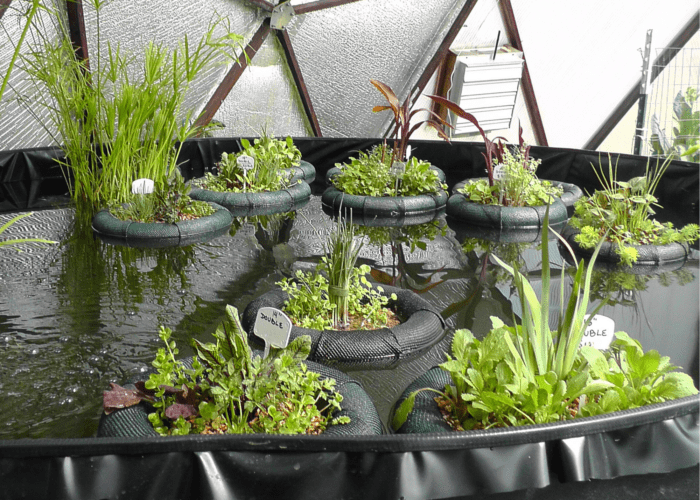
It is also important to make sure that the plants are not poisonous to fish. There seems to be much debate about which plants and what parts of each plant are potentially toxic to aquatic life. I found this list to be helpful because it includes hands-on experience. I can personally attest to some of her findings. We have had taro and hyacinths in our ponds for decades with no fish deaths to report. We raise goldfish primarily, so that is all I can attest to myself. Plant at your own discretion.
A Sustainable Future Rooted in the Past

Floating gardens sustained the most populated city to exist in Mesoamerica by creating a simple and effective local food system. There are many places in modern America where local food systems do not exist. Will floating gardens solve that? No. What will help us solve that issue is to think about simple and effective solutions.
In a world full of innovation it is easy to move on the latest and greatest technologies. It is easy to forget the triumphs of the people who came before us when we are so busy trying to solve the issues we face today. The floating gardens of Xochimilco are a great reminder that sometimes the answers to our current and future issues lie in the past.
Floating gardens are likely not the solution to our broken food system in America, but finding a way to adapt and grow food locally is. The Growing Dome can help you do just that. It was born out of this very idea 30+ years ago. Faced with the harsh winters of the Rocky Mountains in Colorado, a need for local food was imperative. The geodesic passive solar Growing Dome was and still is the simple and effective solution. Our winters are still harsh and our need for local food is still prevalent. Learn more about the 7 features that create gardens that thrive 365 and contact us today for more information.

